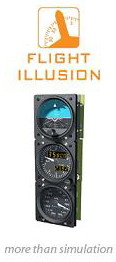! ! WARNING ! !
Above is Zulu Time!!
The EMDU.
The EMDU or Electro Motor Drive Unit, houses not only the electro motor, but also the gearbox, slip-rings, and theEMC or Electro Magnetic Clutch.
The gearbox consists of a worm and worm wheel combination. This is used because of the basic principal that states that the worm can drive the wheel, but not the other way around!
This is necessary because the gimbal rings have to be able to be static at any position without the electric motor having to withstand a large amount of torque. By using the worm combination, the torque is translated to the gear work it self. The worm gear is part of the EMDU.
All axes have ball bearing which will need to be greased at specific maintenance intervals.The EMC is an extra feature that plays an important role in the safety systems in case of an TEF or “Total Electrical Failure” would take place. Caused by external power loss or internal failure.
The SVS has to be able to be controlled and operated by one person, being the pilot, without any interferences from outside the sim. This because, while operating this sim, opposite to all other sim’s, you do not have any visual contact with the outside environment at the specific location of the SVS, and you are completely enclosed inside a cocoon. More importantly, you have no way of knowing the positions of the gimbals in an emergency situation, like for example the TEF. No power means, no position sensing, nor position controlling for that mater! This is a safety problem, knowing that the gimbal rings all have to be horizontal aligned, to be able to open the upper half of the SVS, this upper half is also called the capsule-canopy.
The solution for this problem is easy and difficult at the same time. Because it has to be “fail-safe”, this expression is often used for several systems throughout the world of aviation.
The problem can be solved, by use of two options.
First solution: a select set of batteries to supply an amount of back-up power to the SVS position indication systems and the control system, in case of emergency. But in case the battery charger fails during normal operation of the SVS, the batteries will get flat not being ready in case of an TEF. That’s why we need a second back-up in case of an TEF. See the design troubleshooting index for more info, under the "Gimbal lock" topic.
NOTE: before the pilot starts any session, he/she is recommended to perform a checklist of all safety systems and their indications. In case a battery charger or a battery it self is faulty this short checklist will immediately indicate this. But still, this is only depending upon the fact that the pilot actually does this check...., and human forget things, so this is no full proof safety item.
Article last modified on 15/06/2015

|

|
|
(c) 2004 www.simbuilder.be Created by See3D.be |
||

